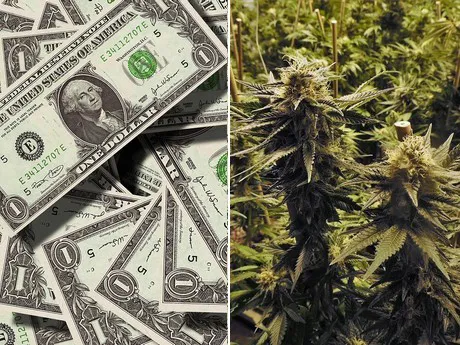In 1996, California was the first US state to legalize medicinal marijuana. Twenty years later, legalization of recreational cannabis followed. While the state government anticipated the arrival of a new cash crop, it turns out that the budding industry has more than a few bumps in the road to overcome.
I'm the taxman
With the promise of a lucrative new industry came the potential for some hefty tax revenue. Both state and county authorities were quick to impose taxes on cannabis cultivation. A little too quick, according to some.
For instance, the Monterey County Weekly reported last month that Green Valley Floral, a grower that had applied to turn part of its rose greenhouses into a cannabis production facility, ran into problems. According to the company's attorney, Jennifer Rosenthal, the grower was being taxed for plants it wasn't growing.
"The disparity arose in the rush by state and county officials to sort out permits and taxes in time for the Jan. 1, 2018 date when recreational cannabis became legal", according to the local newspaper. "Green Valley met an earlier requirement to obtain a business permit to grow cannabis. The tax on that permit is tabulated based on total square footage of growing space, regardless of whether it's being used for cannabis or not."
Rosenthal added that the cannabis cultivation tax in Monterey County, the highest in the state, would drive investment to other counties: "The $15 [per square foot] is too high and it's not sustainable," she told the Monterey County Weekly.
No breaks
Statewide, the legal marijuana industry is looking to catch a break, but they'll have to wait for it. Legislation that would have slashed taxes on legal pot for three years to entice people away from the black market failed to advance out of a key legislative committee, according to a report in The Salinas Californian.
"Marijuana growers and sellers in California, which launched the nation's largest marijuana market at the start of the year, have complained that taxes are too high. They argue many consumers are shopping in the underground market to save money", the newspaper wrote.
With state and local taxes combined approaching 50 percent in some areas, tax revenue has fallen short of expectations. The state had expected to take in $175 million by the end of June, but just $34 million came in between January and March, according to The Salinas California.
At least in Monterey County, the tax rate was lowered as a result of growers' complaints. Andy Easton, an orchid breeder who sold his greenhouse to a cannabis grower a few years ago, comments: "They told everyone of the citizens they would earn at least $5 million in cannabis taxes, and they are on track for less than $2 million."
Meanwhile, the prohibitive tax rates mean "growers have reverted to their former cultural practices and are back in northern California again, growing outdoors with no taxes and no inspection/supervision", Andy warns.
Cash squeeze
Some former greenhouse owners have stayed on as general labor workers in cannabis operations. They report that the new industry seems over-supplied with consultants who seem to have only a minimal grasp of basic horticultural practices, a source tells us. Facilities are way over-staffed and some are still not completely retrofitted because money has been spent wastefully and cash has become scarce. Potential investors are always welcomed and given a “spiffed-up tour”, but ultimately they want to see the books before they invest and that shocks them, the source says. According to them, just the gas bills for overheated or inefficiently heated facilities have become ridiculously high.
Pesticide residues
Money problems aren't the only thing troubling the fledgling industry. An article in a recent edition of The Salinas Californian wrote about "an alarming increase in the use of a powerful banned pesticide at illegal marijuana farms hidden on public land in California."
The chemical in question, carbofuran, is intended for use as an insecticide, but it's so powerful that a quarter of a teaspoon can kill a 300-pound bear. While the product is illegal in the United States, it is said to be smuggled in from Mexico by drug cartels and laborers hired to clear forestland and replant it with illegal marijuana.
While this concerns illegal grow operations, Andy expects there might be repercussions for the industry as a whole as well: "Now that cannabis is classified as a food crop, they test it and of course, the marginal producers have been using illegal pesticides/fungicides on the crop."
He adds: "As I said in an interview two years ago, there are two sorts of lawyers seeking to profit from cannabis. Firstly, the ones who were assisting in securing legalization. But I warned about the second group who would come along several years later, claiming that people had become sick from smoking/ingesting cannabis that had been sprayed with toxic chemicals. That second group, the ambulance chasers, are sitting by, rubbing their hands and waiting!"



